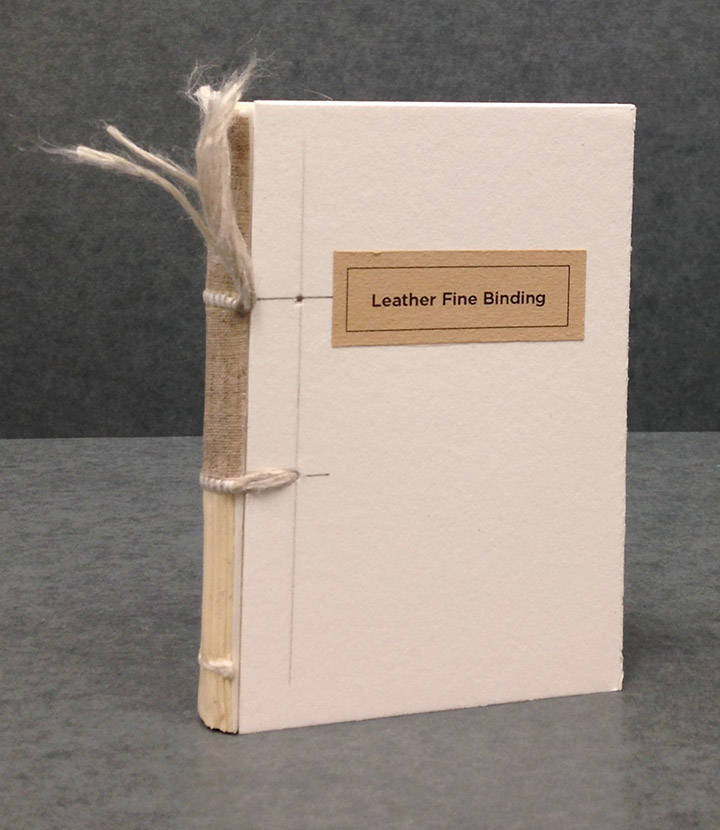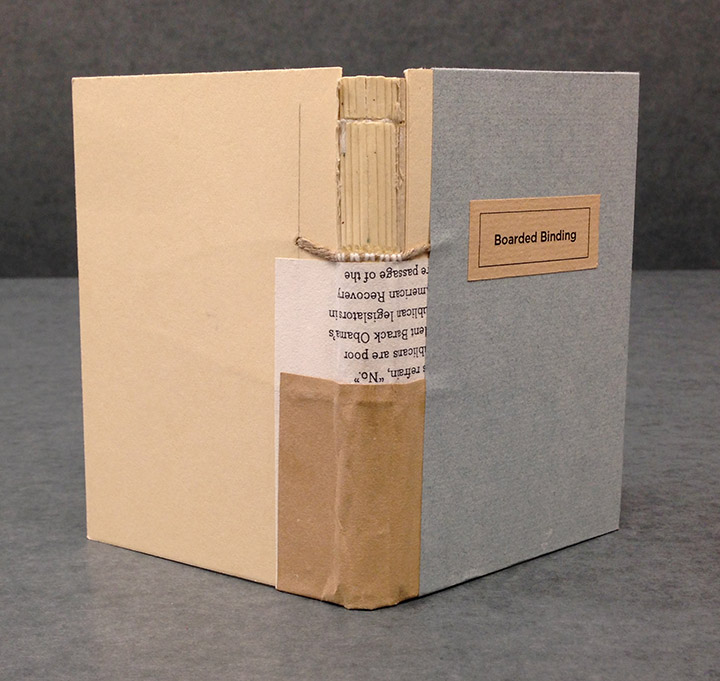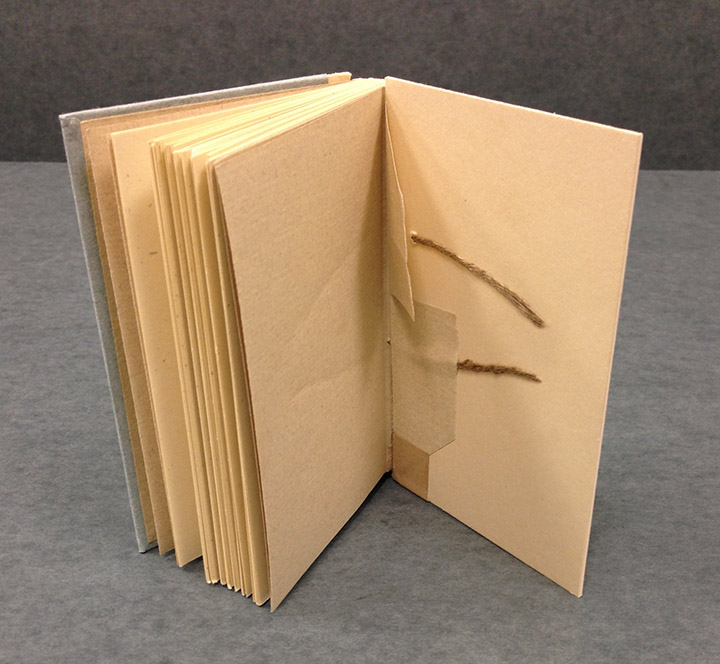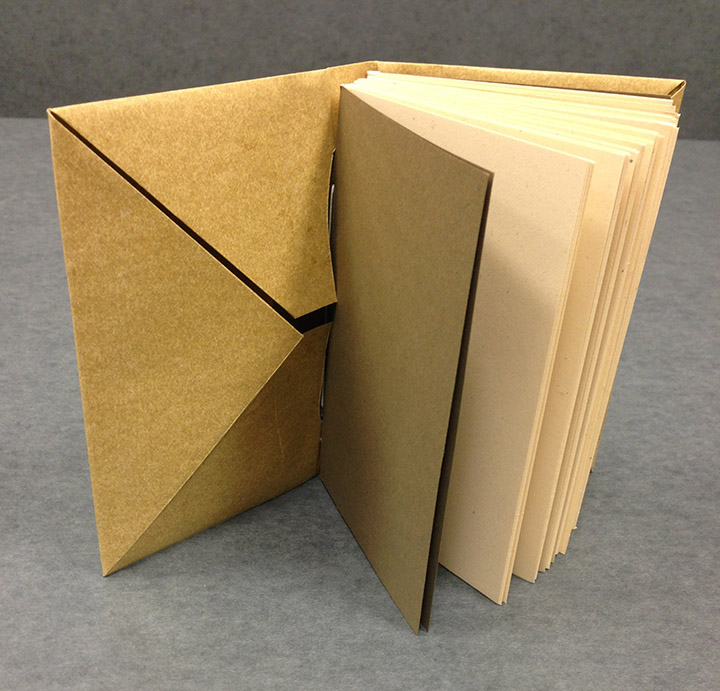As someone with both a professional and personal interest in book arts and bookbinding, one of my favorite items found in Special Collections is Biblio Tech: Reverse Engineering Historical and Modern Binding Structures with a Focus on Board Attachment by Karen Hanmer.
Biblio Tech is a set of bindings that first began as a project for a series of workshops on board and case attachment for book artists who were primarily printmakers. In the set of bindings, Hanmer “models numerous structures, all left uncovered and only partially completed so methods of board attachment, sewing, spine lining, and endsheet construction remained visible.” Biblio Tech is a fantastic resource for anyone interested in the books arts and bookbinding techniques.
Biblio Tech includes examples of twelve different binding techniques including simplified binding, non-adhesive paper case, sewn boards, split board, German case, leather fine binding, scaleboard, boarded binding, crossed structure, tacketed, Medieval, and Ethiopian binding. The binding examples utilize various papers, boards, leather and sewing supports. Each model measures approximately 13 x 9 x 1 cm. The set also includes a 45 page illustrated booklet outlining key structural features of each binding and providing numerous references for further study.
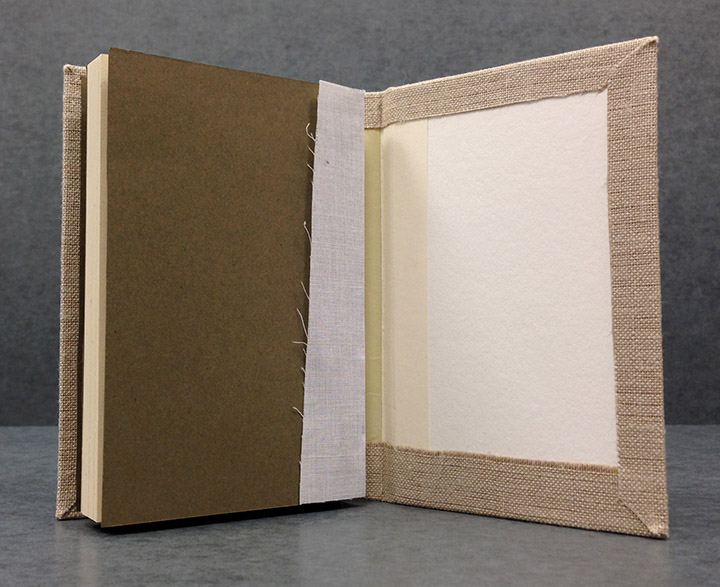
German case binding, which is the primary binding style used here in Preservation for repairing circulating materials.
Ashley Jones
Preservation Librarian


